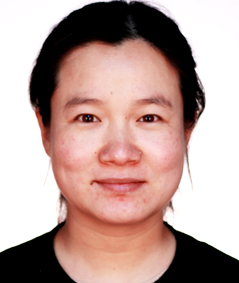IntroductionZhao Lina, female, professor, master's supervisor, renowned teacher at Beijing University of Chemical Technology, and member of the Computer Science Committee of the Chinese Mathematical Society. EducationWork ExperienceSocial PositionSocial ActivitiesResearchI focus on the research of computer vision and big data science, with a focus on intelligent images and hyperspectral images. I have achieved a series of research results in the theoretical research of deep learning, low rank subspace representation, matrix restoration, tensor models, and other basic and applied research. Published more than 30 papers in the field and more than 10 EI papers. Related papers have been published in IEEE TGRS (Information TOP, ESI Remaining Highly Cited 170), Neurocomputing (Information TOP), Computers&Mathematics with Applications (Mathematics TOP), IJMLC (SCI 5.6), and Numerical Algorithms (Chinese Academy of Sciences Zone 2); International conference reports and papers, including ICCV 2019 (Visual Summit). Hosted and participated in multiple projects funded by the National Natural Science Foundation and the Ministry of Science and Technology, including hosting major research program cultivation projects funded by the National Natural Science Foundation. Academic contribution 1: For the first time, the attention based BERT model in natural language processing was introduced into image processing, and relevant frameworks were formed into paradigms to solve the classification problem of hyperspectral images. Compared with the top ten algorithms recorded in the literature, we achieved the best classification accuracy. The work can be seen in the 2020 IEEE TGRS (SCI TOP, IF 5.6); Academic contribution 2: The low rank and sparse representation of high-dimensional data, as well as the clustering of low rank subspaces, are the core issues of intelligent image processing. We apply the algorithm of low rank sparse matrix fitting to subspace representation problems, theoretically proving the convergence of the problem, and experimentally verifying that the algorithm has the best accuracy and convergence rate in similar algorithms. The article can be found in the 2020 COMPUT MATH APP (SCI, TOP); Academic contribution 3: Compared to the extensive and in-depth research in deep learning, the primitive of artificial neural networks is still the MP neuron proposed in 1960. We analyzed the scalar properties of MP neurons, studied the attention mechanism, and proposed a neural network based on vectorized neurons and a neural activation mechanism for neural functional clusters. A paradigm of vectorized neural networks has been proposed for the construction and research of new neural networks. The article shows the Neurocomputing of 2021 (SCI TOP, IF 5.72) TeachingCalculus Linear Algebra Numerical Analysis Matrix Analysis PostgraduatesFundingProject of National Natural Science Foundation of China: 1. Research on General Time Series Data Generation Method for Industrial Internet,24-26. 2. Research on Machine Learning Algorithms for Glaucoma Diagnosis,16-19. 3. Calibration of Central Anti Refractive Panoramic Camera - Conformal Geometry Algebraic Method,14-16 4. Research on Calibration of Refractive Camera based on Conformal Geometric Algebra. 11-12. Vertical ProjectHorizontal ProjectPublications1. HSI-BERT: Hyperspectral Image Classification Using the Bidirectional Encoder Representation From Transformers,IEEE Transactions on Geoscience and Remote Sensing, 58(1): 165-178, Jan. 2020 2. Neural Networks Based on Vectorized Neurons,Neurocomputing,465: 63-70, 2021, 3. Dimension-divided feature smoothing for graph neural network,International Journal of Machine Learning and Cybernetics,15, 189–206 (2024) 4. Low-rank and sparse matrices fitting algorithm for low-rank representation,Computers & Mathematics with Applications,79(2), 407-425 2020. 5. Alternating direction and Taylor expansion minimization algorithms for unconstrained nuclear norm optimization,Numerical Algorithms,82(1), 371-396, 2019. 6. GRPCA21 for recovering a corrupted low-rank matrix, International Journal of Machine Learning and Cybernetics, 11(6): 1293-1305, 2020. 7. Tensor Subspace Learning and Classification: Tensor Local Discriminant Embedding for Hyperspectral Image, IEEE/CVF International Conference on Computer Vision Workshop (ICCVW 2019). 8. Subspace Clustering and Feature Extraction based on Latent Sparse Low-rank Representation, International Conference on Machine Learning and Cybernetics (ICMLC 2019). 9. Modified LDE for Dimensionality Reduction of Hyperspectral Image, LNCS: Image and Graphics, The 10th International Conference on Image and Graphics (ICIG 2019). AwardsPatentHonor RewardAdmissions Information |

